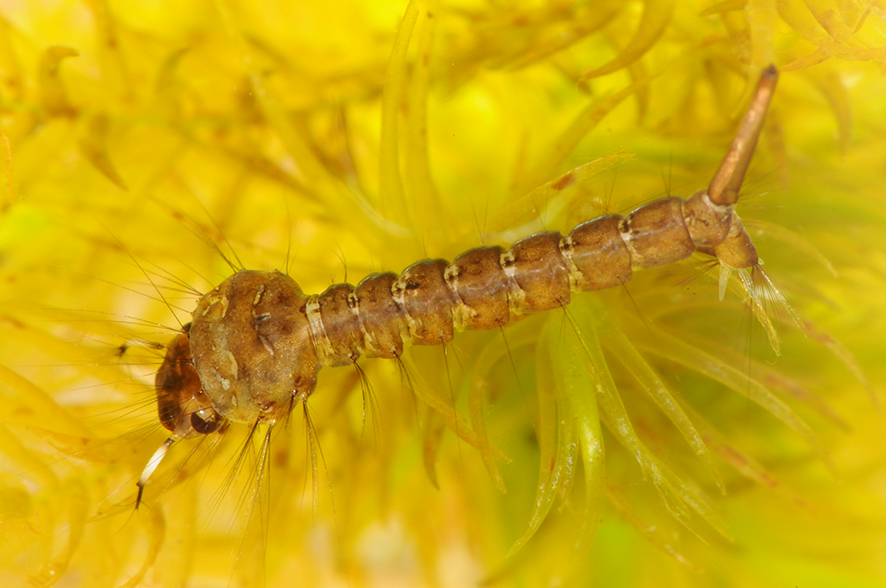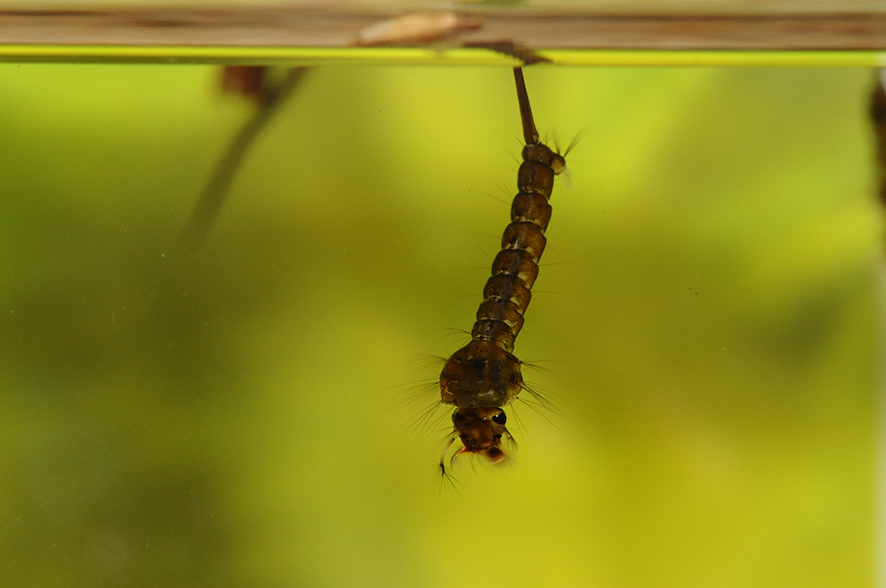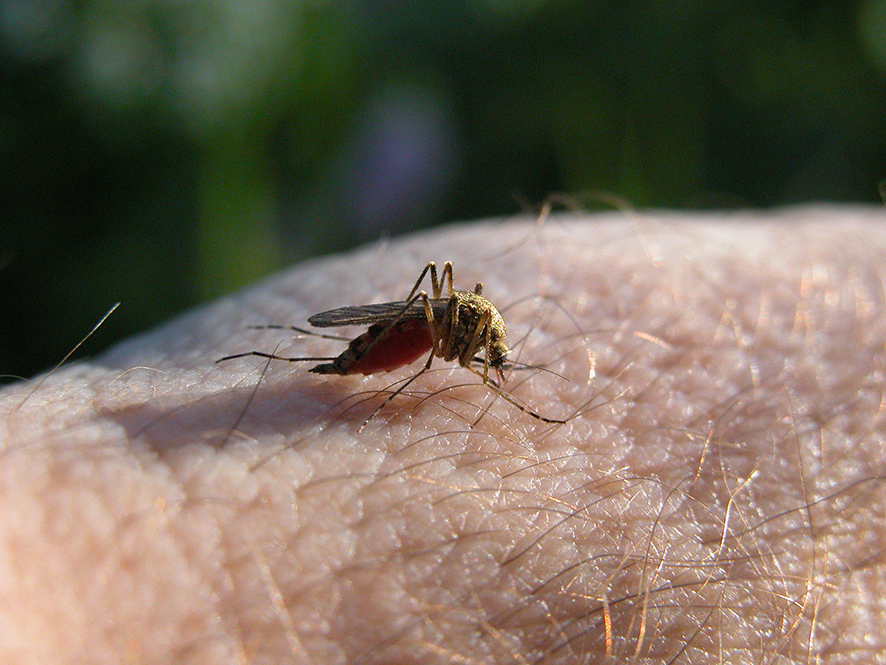Mosquito
Most people’s experiences of mosquitoes are not particularly positive. If a mosquito has managed to get into the bedroom one summer night, its annoying buzzing and the expectation of the coming bloodsucking may well prevent a good night's sleep. It is the female mosquito who stings and sucks blood to get the nutrients it needs for its egg production.
The mosquito has a good sense of smell and can smell its victim at a distance of 25 m. The mosquito is attracted to carbon dioxide in our exhaled air, lactic acid from the skin and about another 2-300 fragrances in smaller quantities. It is well known that mosquitoes are more attracted by some people than others. This is because different people excrete pheromones in different combinations. Mosquito repellent contains pheromones that block the mosquito's sense of smell and prevents it from perceiving the repellent-covered person as potential prey.

World’s most dangerous animal, also in Denmark?
Although the mosquito's bite can be annoying, in Denmark it is rarely dangerous to be stung by a mosquito. In the tropics, mosquitoes can transmit deadly diseases such as yellow fever and malaria. The species of mosquito that transmit malaria is considered the world's most dangerous animal. Every year, approximately half a million people die from malaria. Here in Denmark, the malaria mosquito is found in several places, but because of our cold climate, it is fortunately not infected with the parasite that passes on malaria. There have previously been outbreaks of malaria in Denmark, where Lolland in particular was affected. Here, 40% of people were affected by a large malaria epidemic in 1831. Climate changes with warmer and more humid summers could mean that malaria can again come to Denmark.

Facts
There are about 30 different species of mosquitoes in Denmark. Mosquitoes can grow up to 16 mm and weigh up to 2.5 mg. They are insects with six legs, one pair of wings, a slender body and long legs. All species of mosquito larvae live in water. Each species has its preferred aquatic areas. There are mosquito larvae that live in temporary pools of water in forests, in brackish water at beach meadows and in lakes, ditches and streams. If you get bitten by a mosquito in the winter, it's probably the big common house mosquito that is responsible. Its larvae develop in garden ponds and rain barrels, and the adult mosquitoes spend the winter in cool places like outbuildings and ceilings. Mosquitoes are commonly found everywhere in Denmark.


